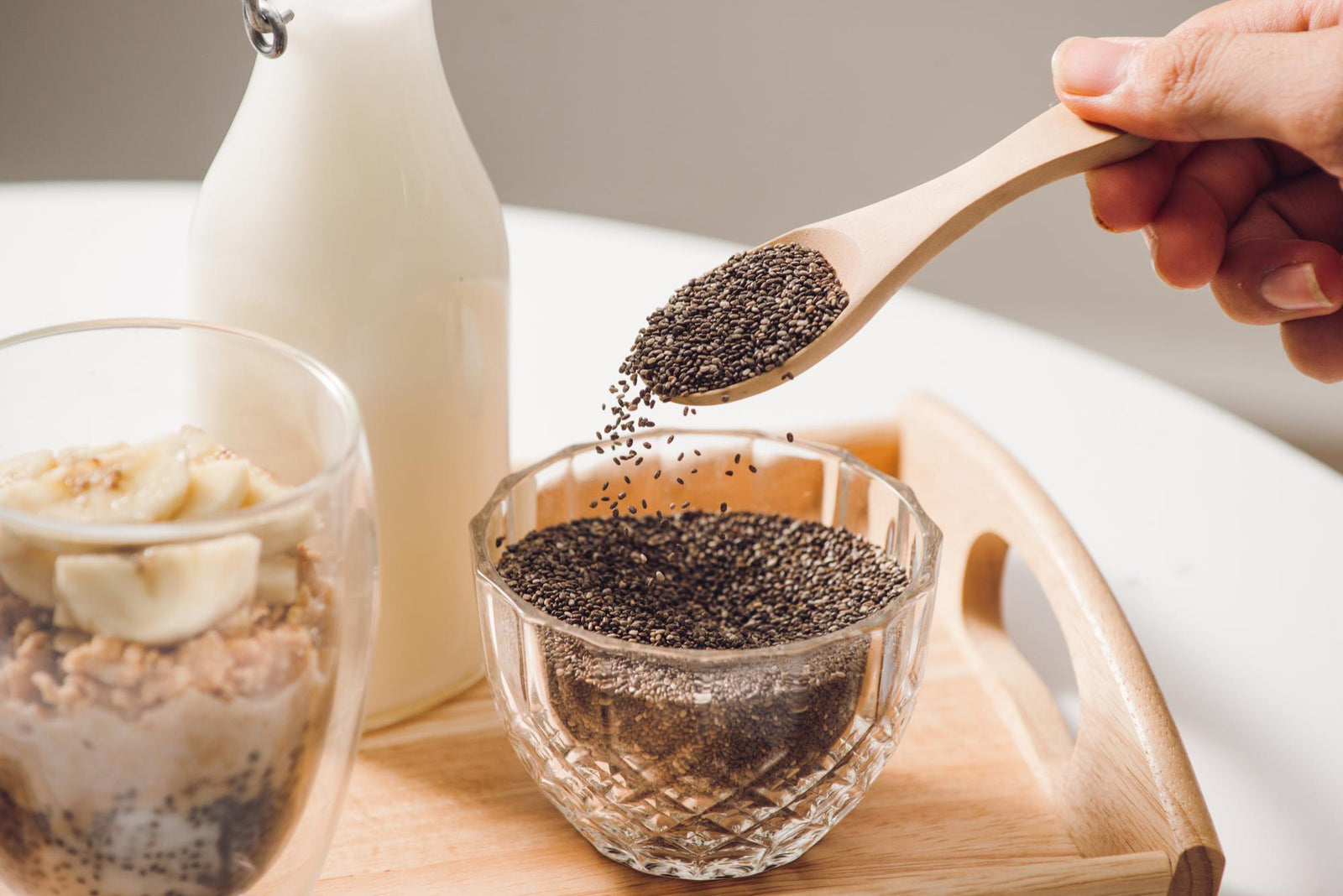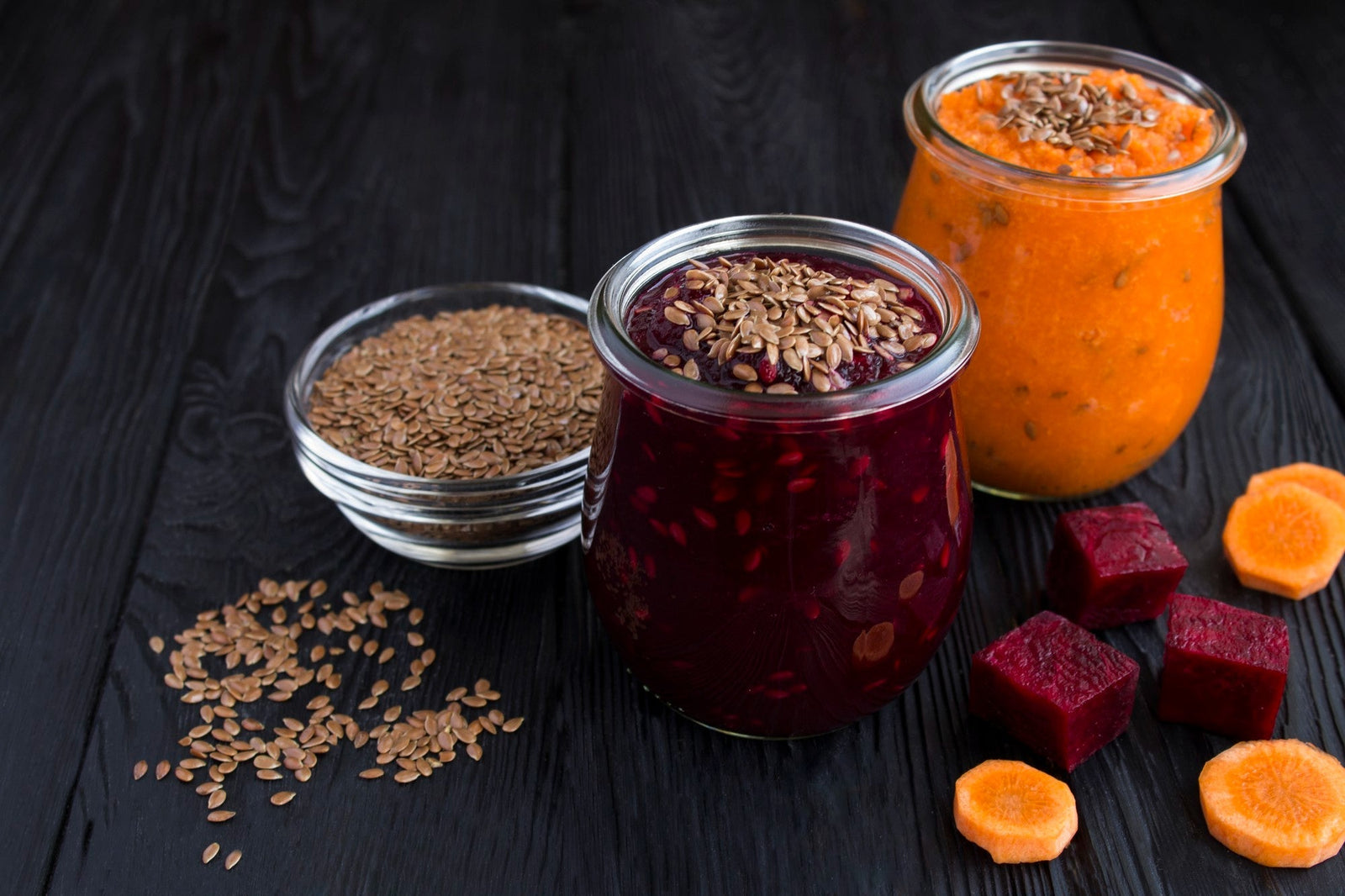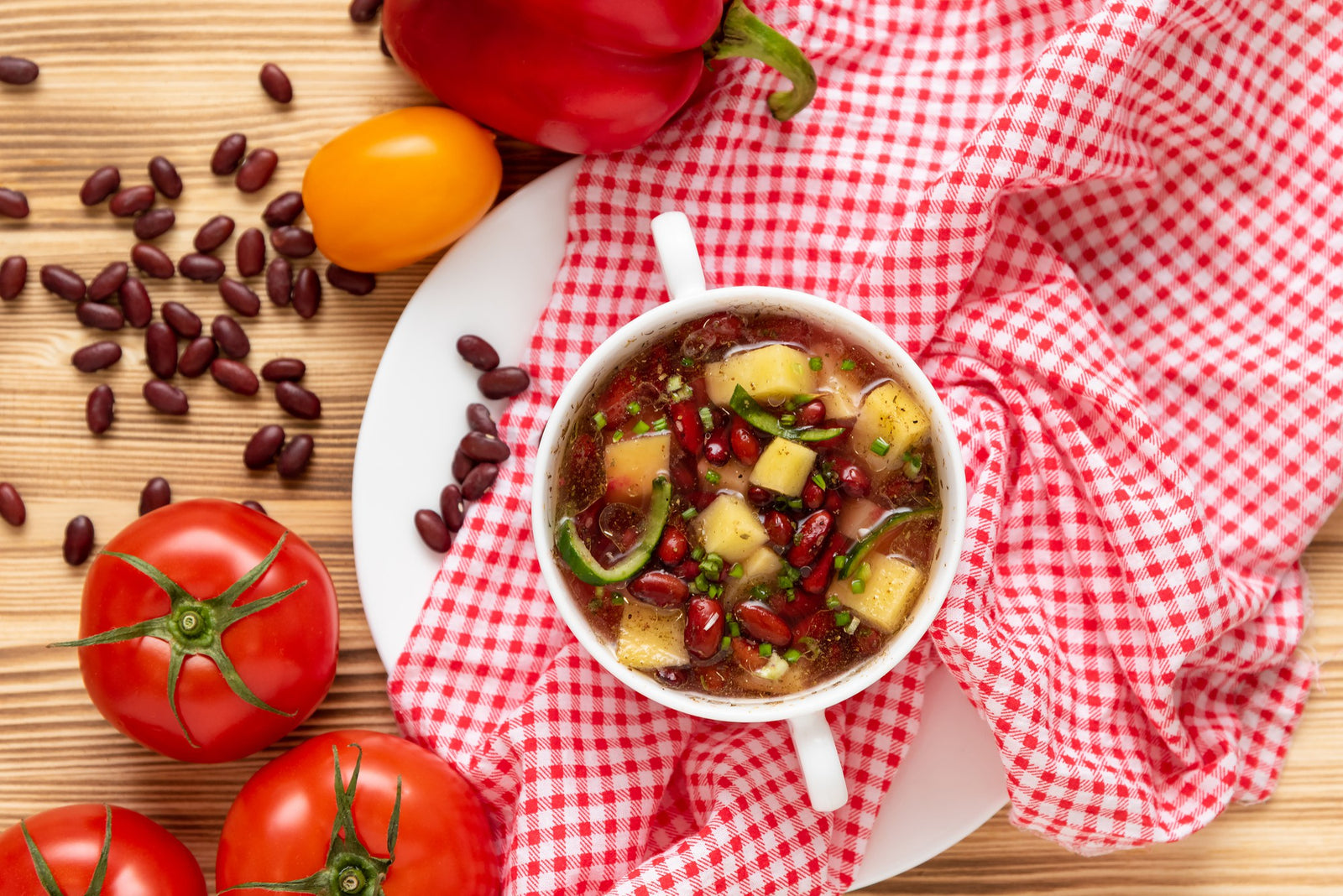
November 01, 2023 4 min read
Chia seeds, the unassuming superstars of the nutrition world, are gaining popularity for their incredible health benefits and versatility in the kitchen. These tiny seeds, originally cultivated by the Aztecs and Mayans, have been rediscovered as a powerhouse of nutrients. In this comprehensive guide, we'll uncover the nutritional treasure trove that chia seeds offer and explore various ways to make them a delicious and beneficial part of your daily diet.
Let's kick things off by understanding what makes chia seeds so amazing in terms of nutrition. Despite their small size, chia seeds are packed with essential nutrients. They provide a plant-based source of protein, making them a valuable addition to various diets, including vegetarian and vegan. Chia seeds are also a fantastic source of dietary fiber, omega-3 fatty acids, antioxidants, and essential vitamins and minerals, such as calcium, magnesium, and phosphorus. The best part is that despite their nutritional density, chia seeds are relatively low in calories, so you can enjoy their benefits without worrying about excessive calorie intake.
Now that you know they're packed with nutrients, let's delve into the health benefits that chia seeds can offer. Chia seeds have gained a reputation as a weight management ally. Their unique combination of fiber, protein, and healthy fats can help curb your appetite and reduce overall food consumption. The omega-3 fatty acids in chia seeds are known to support heart health by reducing blood pressure, inflammation, and improving cholesterol levels. Chia seeds are excellent for your digestive system. Their high fiber content helps prevent constipation, promotes regular bowel movements, and maintains a healthy gut microbiome. For those at risk of diabetes or dealing with diabetes, chia seeds can help stabilize blood sugar levels by slowing down the absorption of sugar. They also provide essential minerals like calcium, phosphorus, and magnesium, which are vital for strong and healthy bones. With their rich antioxidant content, chia seeds help safeguard your body's cells from oxidative stress, potentially reducing the risk of chronic diseases and slowing down the aging process.

Now that you're excited about the health benefits, let's explore some creative and delicious ways to incorporate chia seeds into your daily meals. You can create a delectable chia pudding by mixing chia seeds with your choice of milk (dairy or plant-based), sweetening it with honey or maple syrup, and letting it set in the fridge until it thickens. Top it with fruits, nuts, or a pinch of cinnamon for extra flavor. Elevate your morning smoothie by adding a spoonful of chia seeds. They not only add thickness but also keep you feeling full until your next meal. You can also bake chia seeds into your favorite goods, such as muffins, cookies, and bread. They lend a delightful crunch and a nutrition boost. Sprinkle chia seeds onto your salads to introduce a unique texture and enhance nutritional content. Stir chia seeds into your morning oatmeal or cereal for a nutritious and satisfying breakfast. Craft your energy bars or granola bars with chia seeds as a binding agent. Not only will they hold the bars together, but they'll also ramp up the nutrition.
Chia seeds are not just a health booster; they are also incredibly versatile in the kitchen. Let's explore more delightful and savory applications. You can prepare a wholesome, homemade jam by combining chia seeds with your favorite fruits, a touch of sweetener, and a hint of lemon juice. This creates a lower-sugar alternative to conventional jams. For vegans and those with egg allergies, chia seeds can serve as an excellent egg substitute in baking. Mix one tablespoon of chia seeds with three tablespoons of water, allowing it to form a gel-like consistency. Blend chia seeds with water, herbs, and spices to form a dough. Roll it out, cut into crackers, and bake them for a nutritious snack. Give your chicken or fish a healthy and crispy crust by coating them with a mixture of chia seeds and your favorite seasonings. Whirl up a smoothie with your preferred fruits and yogurt, then crown it with chia seeds, granola, and fresh fruit for a wholesome, colorful breakfast.

To make the most of chia seeds, it's essential to know how to choose and store them. When purchasing chia seeds, opt for organic or non-GMO varieties for the best quality. Ensure the packaging is airtight and free from moisture. You can usually find chia seeds in health food stores, supermarkets, or online. To maintain their freshness, store chia seeds in an airtight container in a cool, dry place. When properly stored, chia seeds can remain fresh for several years.
While chia seeds offer numerous health benefits, it's essential to be aware of potential side effects and take necessary precautions. Consuming excessive amounts of chia seeds without sufficient liquid may lead to digestive discomfort. It's vital to drink an adequate amount of water when incorporating chia seeds into your diet. In rare cases, some individuals may be allergic to chia seeds. If you experience any allergic reactions, such as hives or difficulty breathing, seek medical attention immediately.
Incorporating chia seeds into your daily diet can be a game-changer for your health and culinary adventures. Their exceptional nutritional value and adaptability in various recipes make them a must-try addition to your pantry. Whether you're aiming to boost your heart health, manage your weight, or simply enjoy delicious meals, chia seeds are an asset on your journey to a healthier, more flavorful lifestyle.
❤ Try our USDA certified organic Chia Seeds ❤
Comments will be approved before showing up.

January 27, 2025 3 min read
Flaxseed, the tiny yet powerful superfood, is packed with nutrients that can support weight loss. From curbing hunger to stabilizing blood sugar, this guide dives into the science of how flaxseed can help you shed those extra pounds.

December 11, 2024 3 min read
Discover three quick and easy soup recipes featuring organic small red beans. From a classic vegetable soup to a creamy potato blend, these wholesome recipes are perfect for chilly days and busy weeknights. Packed with flavor and nutrition, these soups will warm your heart and soul this winter!

December 06, 2024 3 min read
This vibrant and nutritious Green Lentil Salad combines tender lentils with grilled chicken, fresh vegetables, and a zesty lemon dressing. Packed with protein, fiber, and essential vitamins, it’s the perfect healthy meal for any time of day.
© 2026 Be Still Farms- Real, Fine Organics.
Privacy | Terms | Refund Policy | Organic Certification
